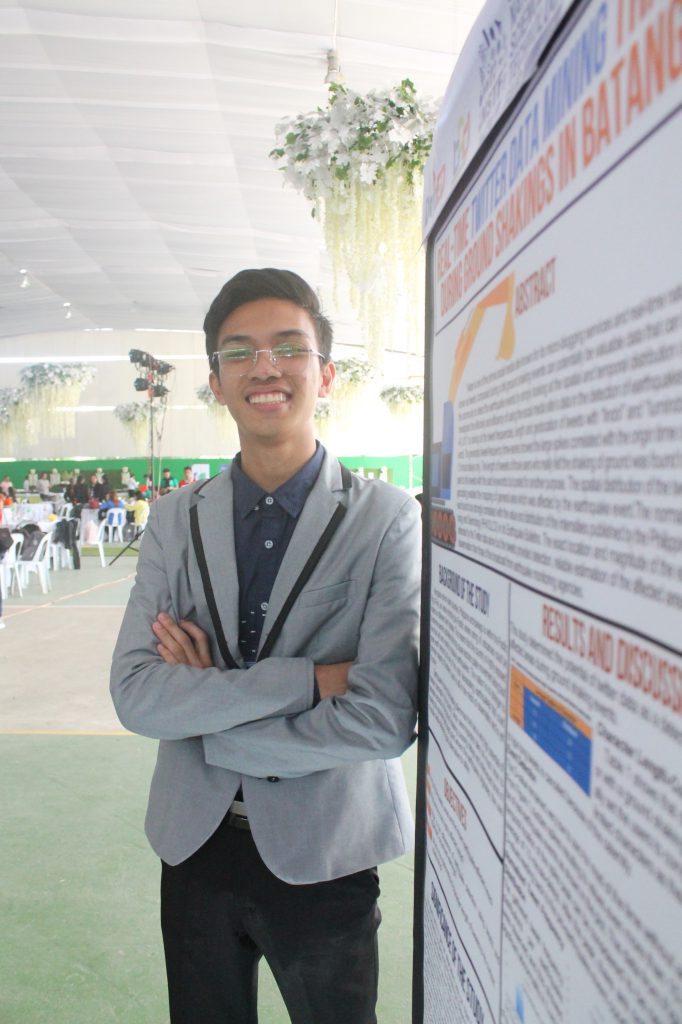Expect a millennial to capture the minutest of details and share it on social media, sometimes out of FOMO—fear of missing out. Such is a perception towards the generation that is digitally connected and socially “woke.”
“In a world survey in 2016, the Philippines topped [the list of countries with] the most number of hours spent on social media, like Twitter; hence the connotation that instead of us praying after a ground shaking, we tend to post it first on social media sites, and for me it’s somehow a bad thing so bakit hindi tayo kumuha ng good thing sa pagiging ‘keyboard warrior’ ng mga Pilipino?” Jireh Emmanuel Gumaro explained.
Jireh is a student-researcher from Valenzuela City School of Mathematics and Science participating in the 2019 National Science and Technology Fair (NSTF) and a self-professed avid Twitter user. His observations are first-hand, and his innovation is a light-bulb moment as he was constantly refreshing his Twitter feed by the minute. The deluge of tweets, which could have been a nuisance to a regular reader, served as the Grade 12 learner’s low-cost solution to identifying earthquake-affected areas instantaneously.

“Real-Time Twitter Data Mining Tracker During Ground Shakings in Batangas” maximizes the potential of the social media site and the ‘FOMO’ of many Filipinos by studying the spatial and temporal distribution of the tweets made during a ground shaking. Using the frequency, length, and geolocation of tweets with the keywords “lindol” and “lumindol,” data on large spikes correlated with the time of the quake will be generated with an average of a mere 1.5-minute delay.
“Since seismographs take time to generate records of the ground shaking—causing delays in locating the epicenter—the thesis could help the community in terms of awareness of a ground shaking at the local level. The study may aid in apprising members of a household who possibly lack access to information from the national and the local government, and may give seismologists an idea for a new equipment that uses the volume of tweets to locate an ongoing earthquake,” Jireh stated in his paper.
While he admitted that his family does not have deep pockets to fund his research, his parents offered the most valuable backing he could possibly ask for: “Nung una hesitant sila, sinasabi nila, ‘Uubra ba yan? Adik ka lang sa Twitter,” pero sabi ko po di ba ang essence ng research is makapag-produce tayo ng something out of nothing. Kaya nung nakita nila yung progress, sabi nila parang maganda naman and full support naman ang binigay nila all throughout nung research, kulang na lang po samahan nila ako magpuyat.”
When asked of his plans to further his research by proposing its use to the Department of Science and Technology-Philippine Institute of Volcanology and Seismology (DOST-Phivolcs) or to the National Disaster Risk Reduction and Management Council (NDRRMC), this millennial is not one to miss out on the opportunity to help deter possible damage and to engage the public in saving lives: “Ready po ako.”
END


